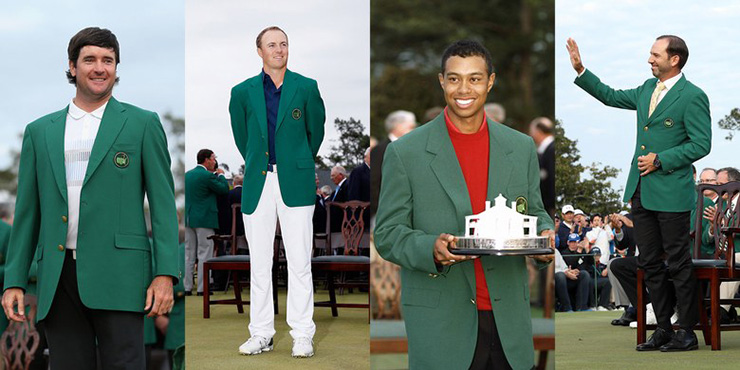By Dave Shedloski
It goes without saying that being “on form” matters at any golf tournament, and especially a major championship, where the challenge and the pressure are ratcheted higher. But just how on top of one’s game does a player have to be coming into the Masters to be considered a legitimate contender?
When looking at the results of the last 40 winners at Augusta National in their most recent start before their victory, it’s difficult to divine an answer. Incredibly, it’s an even split, 20-20, between winners who finished inside and outside the top 25 in their previous event. It should be noted, however, that the top-25 reference is simply a common statistical metric in golf. Drilling down further, you’ll find that there’s an even 20-20 between winners who were 17th or better coming to Augusta National Golf Club and those who finished 30th or worse. (So, basically, eliminate any contestant who was 18th to 29th in his last event.)
In the past 10 Masters, previous performance has seemed to matter little. Just three men finished in the top 10 before capturing the green jacket: 2018 winner Patrick Reed, who was T-9 at the WGC-Dell Technologies Match Play; Jordan Spieth, T-2 at the Shell Houston Open in 2015; and Bubba Watson, who won in 2012 after a T-4 at the Arnold Palmer Invitational.
Four of the last eight Masters winners finished exactly T-30 in his previous start: Sergio Garcia (2017), Danny Willett (2016), Adam Scott (2013) and Charl Schwartzel (2011). And, hey, look who just finished T-30 at the Valero Texas Open—Jordan Spieth.
Watson is a bit of an anomaly in that he also won in 2014 to become the last of the eight men since 1979 to claim the green jacket after missing the cut or withdrawing. Watson shot 83 and withdrew from the Arnold Palmer Invitational before his second Masters win. The only other player to have a top-10 before one Masters win and a missed cut in another is Jose Maria Olazabal in 1994 and 1999, respectively.
Only three Masters champions—Tiger Woods, Phil Mickelson and Sandy Lyle—triumphed in his previous start. Mickelson and Lyle did it in back-to-back weeks in 2006 and 1998, respectively. Woods in 2001, when he completed the “Tiger Slam,” actually won his previous two starts at the Players and Bay Hill. Tiger’s finishes preceding his other Masters wins, all at The Players, were T-14 in 2002, T-31 in 1997 and T-53 leading up to his 2005 victory. The Players was moved to May in 2007, but has been returned to March starting this year. Maybe that is the cause of his Masters drought.
Besides Woods, Mickelson and Lyle, only six other Masters winners placed top five in their last start: Spieth, Watson, Olazabal in ’94, Bernhard Langer in ’93, Crenshaw in ’84 and Seve Ballesteros in 1980.
Probably the hottest player outside of Tiger in 2001 who went on to win the Masters was Fred Couples in 1992, when his previous five starts were T-13, win, T-2, 2, win. The coldest: you’d probably guess Ben Crenshaw, who was simply lost before capturing the 1995 edition the week his longtime teacher Harvey Penick died. Crenshaw had three missed cuts and a T-42 before getting a setup tip from his caddie Carl Jackson that unlocked a magical week of ball striking.
But no player in the last 40 years seemed less destined to win than Jack Nicklaus in 1986. The Golden Bear, 46 years old, had missed the cut at the Players, withdrawn from the USF&G Classic in New Orleans with a back injury, finished T-47 at Doral and missed the cut at the Honda Classic, a venue where he’d won three times.
Most people know that Nicklaus was motivated that week after reading a newspaper column proclaiming he didn’t have a chance. Few know that Scott Verplank, after playing with Nicklaus in the first round, told Jack II, who was caddying for his father, that the Golden Bear would be fine if he kept his head still while putting. The result was his sixth green jacket and the record as the oldest Masters champion.
And that’s how a player finds his form. More often than not, he doesn’t bring it with him.









